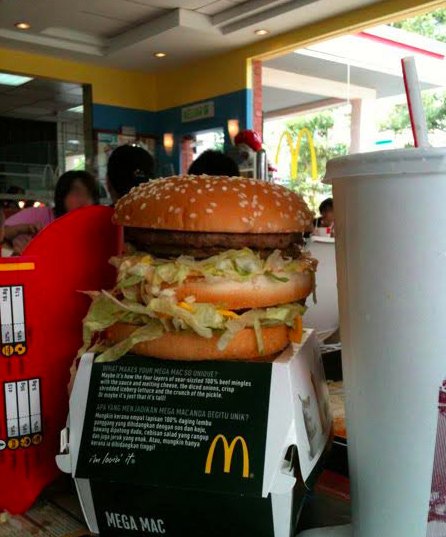The “Super Size” trend

Credits: Pavithran / Public Domain
“Supersize me,” Morgan Spurlock says to the cashier, and subsequently, a shudder passes through the audience. Everybody knows he won’t be able to stomach the gargantuan portions, but he orders it anyways. This is the nitty-gritty reality of the fast food industry in the United States.
“[…] Serving larger portions leads to greater levels of consumption, and the effect seems to be more pronounced in adults than children,” says Prof. Brian Ratcliffe, an emeritus professor of nutrition at Robert Gordon University.
A team of researchers at Cambridge recently found that increasing portion sizes over the years is to blame for the obesity epidemic. The study, published in the Cochrane Database of Systematic Reviews outlined that when people are offered larger quantities food, they acquiesce. “People seem to be reluctant to leave or waste food and so consume what they are served or find larger portions more attractive,” says Prof. Brian Ratcliffe.
The study, which is based on 6,711 people on clinical trials, suggests that reducing portion sizes can cut as many as 279 calories a day out of British citizen’s diets, a 16% reduction in the average energy intake If American citizens were to do the same, they would cut out at least 527 calories, or up to 29% of the average energy intake.
“This is the most conclusive evidence to date that people consistently consume more food and drink when given larger portions, packaging or tableware,” says Dr. Shemilt, a researcher from Cambridge’s Behaviour and Health Research unit.
“At the moment it is all too easy – and often better value for money – for us to eat and drink too much. The evidence is compelling now that actions which reduce the size, availability and appeal of large servings can make a difference to the amounts people eat and drink,” Shemilt also says. Those campaigning against the food industry’s harmful practices say this is yet another area where the food country has work to do: reducing portion size so they can curb the overconsumption of calories.
There has been a troubling increase in the size of servings over the years. Like Malcom Clarke, co-ordinator of the Children’s Food Campaign says, “Bigger plates, bigger packs, bigger portions, bigger us. It’s nudge theory, encouraging us […] to consume far more sugar, fat and calories than we ought to, and making it easier to do so.” A report by the British Heart Foundation showed that on average, between the years 1993 and 2013, a family pack of chips increased about 50% in size. Ready-to-cook meals (e.g. shepherd’s pie) almost doubled in size. An individual chicken pie was 40% bigger while bagels increased by 22% in size.
But are fast food industries the only ones who can halt this super-sized madness?
Dr. Shemilt thinks otherwise: “Consumers do have a role to play – for example, all of us can reduce the size of plates or glasses we use and put pressure on the pubs and restaurants we visit by asking for a smaller portion.” Dr. Alison Tedstone, chief nutritionist at Public Health England says that we can combat this epidemic by being more mindful of portion sizes when we cook, shop, or eat outside, “[…] to avoid overeating and help maintain a healthy weight.”
Researchers also suggest changing lifestyles and visiting restaurants that offer different portion sizes to mindfully combat the epidemic in small ways.
The Food and Drink Federation, a British organization, sums it up: “[T]his research […] confirms the complexity of tackling obesity and that multiple solutions are required, from considering the food we eat to the size of spoons we use to serve food.”
We may be a part of the problem, but we need to be part of the solution.
Sources: BBC, The Guardian

This is Anoushka’s second and final year in The Talon. She still does not know how to write a biography and would probably ‘google’ it if she knew...





